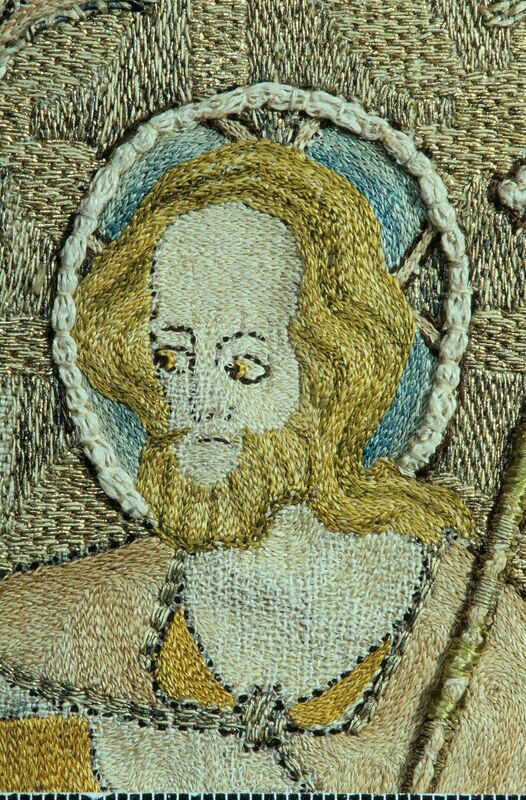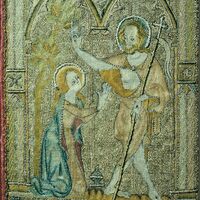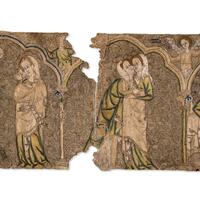Opus Anglicanum vestments
Date:
First half of the fourteenth century
Location or Findspot (Modern-Day Country):
United Kingdom
Medium:
Linen,
Silk,
Gilt-silver,
Silver or gold thread
Description:
"Opus anglicanum," Latin for "English work," refers to luxurious English embroidery executed with gold, silver, and gilt-silver threads. Beginning especially in the late twelfth century, these textiles became highly valued as liturgical textiles (e.g., copes or chasubles) but sometimes also as secular textiles (e.g., royal clothing, decorative hangings). Most Opus Anglicanum was produced by the embroidery guilds of London. The example shown here from the Swedish History Museum includes scenes from Christ's Passion and Resurrection. The fragment from the British Museum instead focuses on the life of the Virgin: the Annunciation, Visitation, and Nativity.
Relevant Textbook Chapter(s):
8
Repository and Online Resources:
• Read more about the Opus Anglicanum in the Swedish History Museum.
• Read more about the British Museum example.
• See more examples of Opus Anglicanum on the website of the Victoria and Albert Museum, London.



